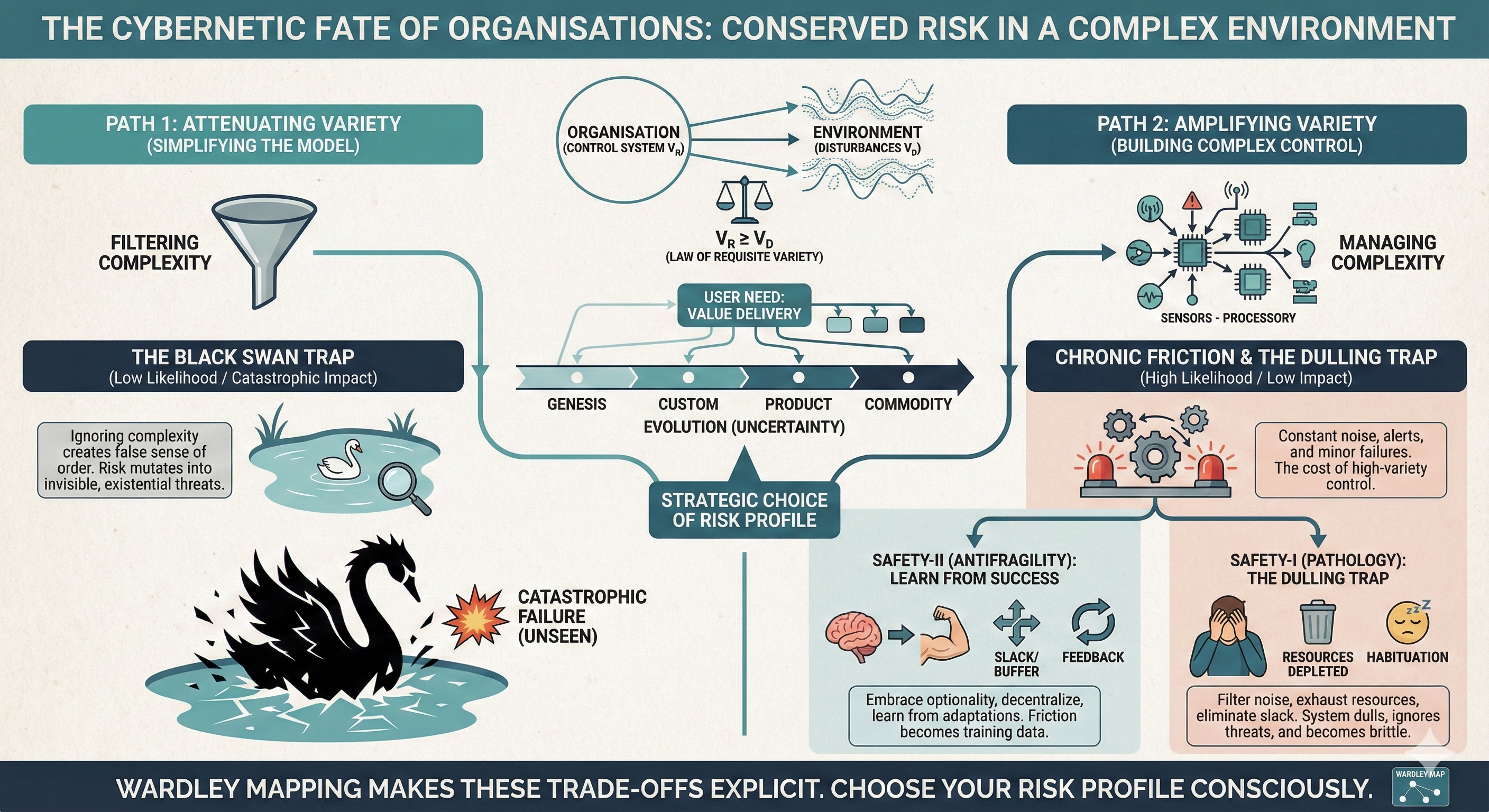The Cybernetic Fate of Organisations
In our previous post, we explored how Panarchy and adaptive cycles help us understand the dynamics of change in complex systems. We saw how systems evolve through growth, conservation, release, and reorganisation. But how can leaders influence these cycles and guide their organisations toward a better future?
Many leaders see Wardley Mapping as a tool for visualising competition, not as a lens for understanding risk. This post bridges that gap. It shows how the cybernetic Law of Requisite Variety (LRV)—the idea that a control system must be as complex as the environment it’s trying to manage—and Wardley Mapping can reveal the hidden trade-offs organisations make when dealing with uncertainty.
Risk isn't eliminated; it's conserved and reshaped by the strategic choices an organisation makes about complexity.
 The LRV states that the variety (V) of your control system must be at least equal to the variety of disturbances from the environment:
The LRV states that the variety (V) of your control system must be at least equal to the variety of disturbances from the environment: V_R ≥ V_D. 'Variety' is just a way of counting the number of different states a system can be in. For an organisation in a volatile market, the real decision isn't about reducing risk, but about transforming the risk it can't get rid of. This transformation depends on a choice of risk profile, which boils down to a trade-off between the likelihood (L) and the impact (I) of failure. This leads to two cybernetic traps: the Black Swan Trap, where hiding from complexity leads to rare, catastrophic shocks, and the Dulling Trap, a result of amplifying complexity in a pathological way.
